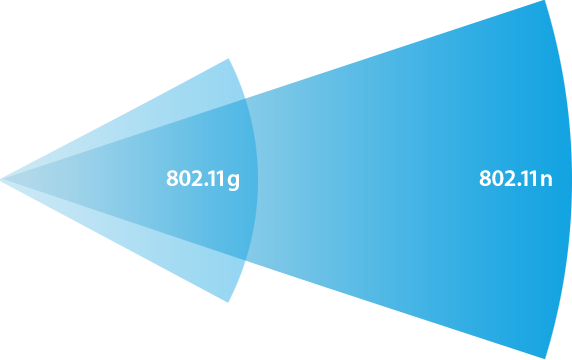Information technology group Wi-Fi Alliance or WFA has been testing a next generation, yet still pre-standard wireless networking program that would define wireless Internet of the future. Much ado has been tackled about the technology called 802.11n. For the average Internet user, who knows not too much about the standards and technicalities of the information technology tools, 802.11n is just another consumer electronics code.
For the benefit of all computer users, it would be imperative if basic description and comprehensive yet simplified explanation about the code would be offered to the public. What is 802.11n? This is a question that needs to be answered in a way people would easily understand. To begin with, the simple concept of Wireless Fidelity, or Wi-Fi, should be taken in consideration. If you have gone to the coffee shop or to the mall and you see laptop computers users browsing through the Internet without cable connection to any telephone line, that is what Wi-Fi is. The technology facilitates wireless Internet connection within enclosed areas, also popularly termed as 'hotspots'.

To facilitate the wireless transfer of data between the network server and the computers, a standard technology known as IEEE 802.11 is used. The standard is common and is essential for computers using wireless local area networks to run. Because Wi-Fi is still a new wireless Internet standard, it is just logical that researchers continue to do studies to be able to develop better standards that would make wireless Internet technology not just better but also more accessible and more powerful.
Surprisingly enough, 802.11 started in 1997. The standard model was simply coded as such. In a few years after that, several modifications were done to the standard to come up with a series of more sophisticated codes, including 802.11a, 802.11b and 802.11g. In the year 2007, the industry has been testing 802.11n, which is expected to be the standard and common wireless networking kit beginning in 2008.
The information technology industry's standard setting group called IEEE is the body evaluating and setting the wireless Internet connection standards. The body is in pre-testing period over 802.11n, but industry players are positive that it would eventually be accepted globally as a common kit.
The standard is set to be more powerful than all its predecessors, though another newer and more sophisticated wireless networking kit called 802.11y is arranged to the most powerful of them all. In terms of indoor wireless Internet connection, 802.11n will be the most effective, as it will cover a range of 70 meters from the official router. Outdoors, a user has to be within a 250-meter radius to be able to enjoy the services. That is compared to the average 30 meters indoor usage and 120 meters average outdoor usage in all other 802.11 standards.
Thus, if you are out to buy your laptop and you aim to install a Wi-Fi capability program, select 802.11n because it will help you enjoy the service more conveniently. In these days when every sophisticated information device is becoming wireless, no one should get left behind.




Follow Us!